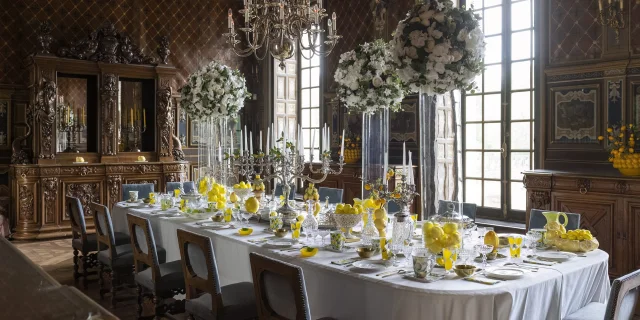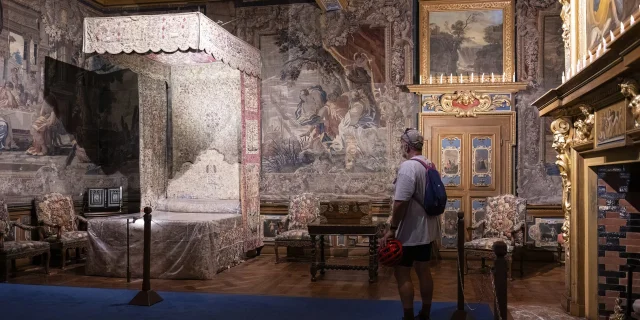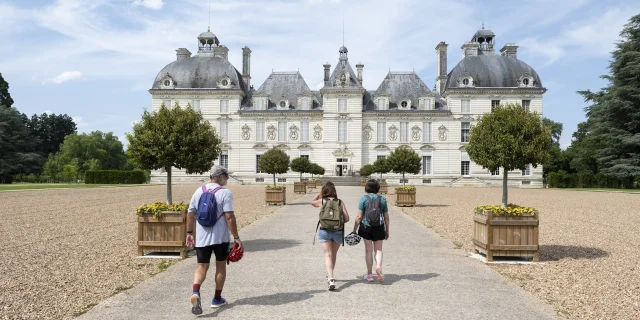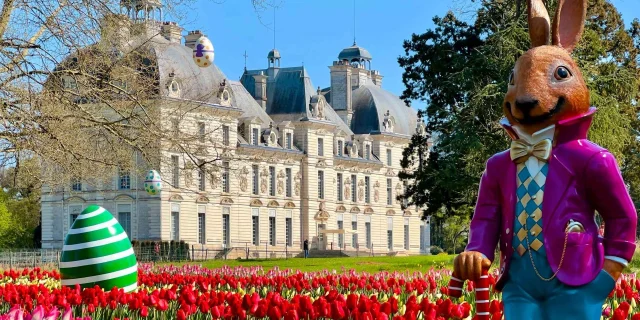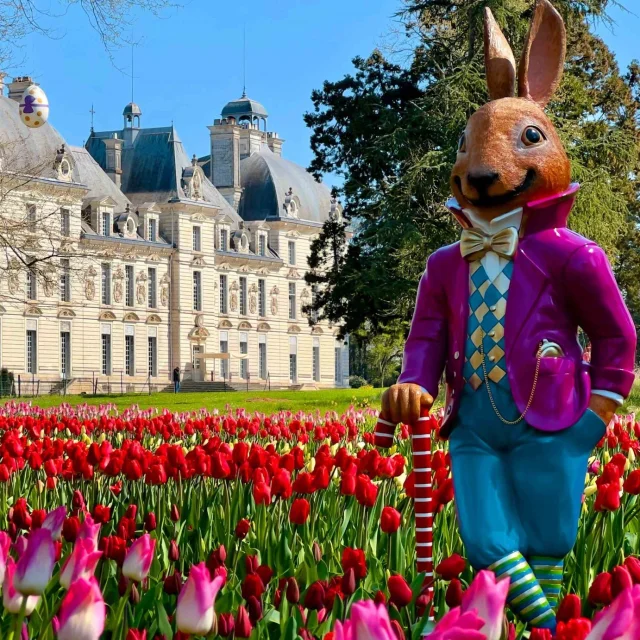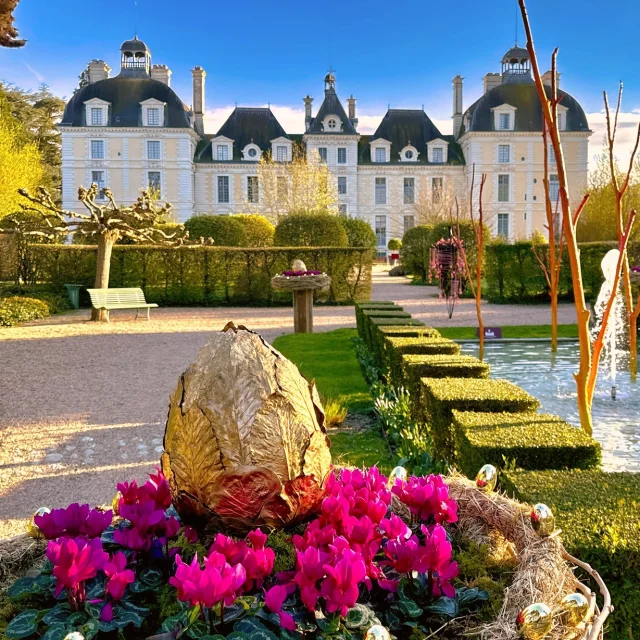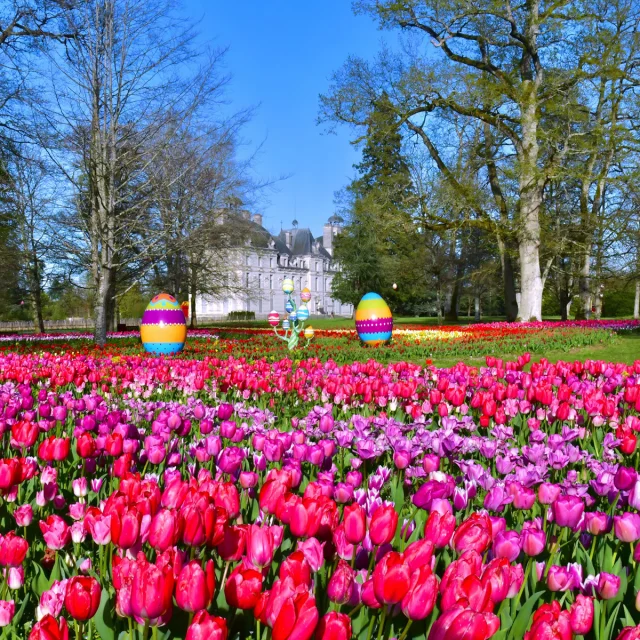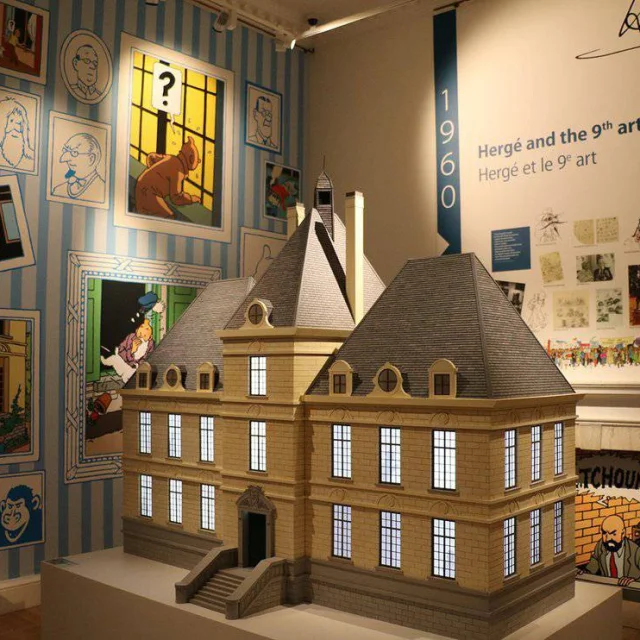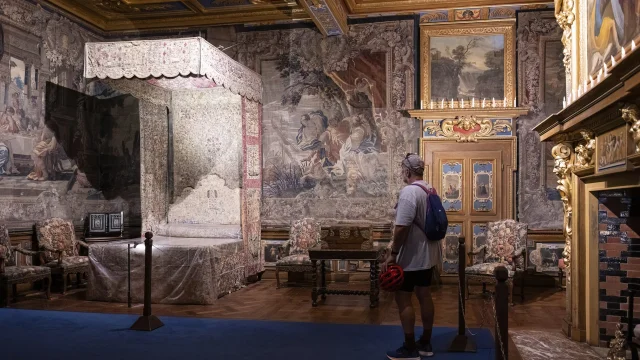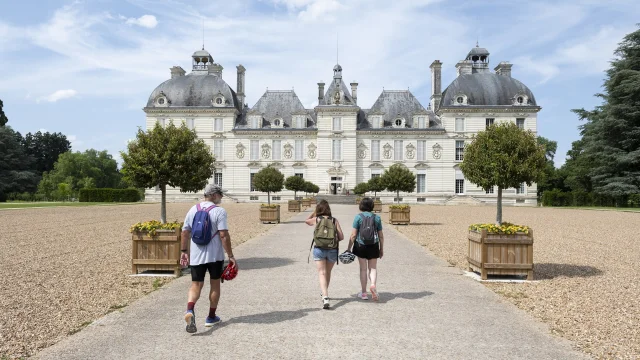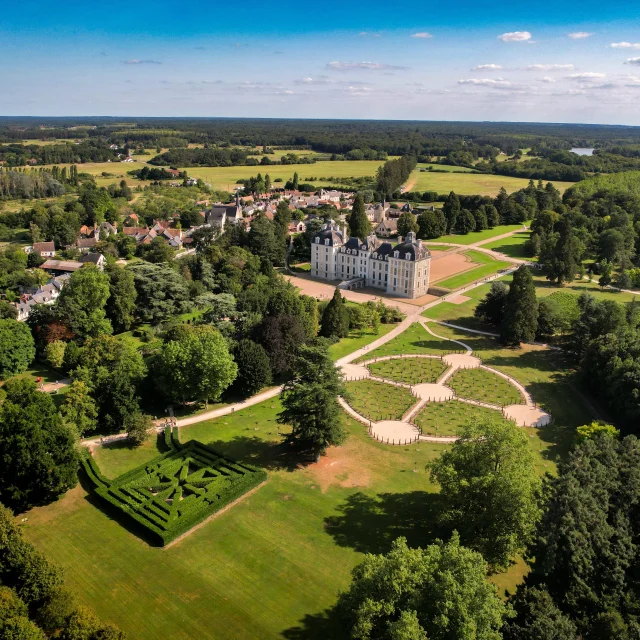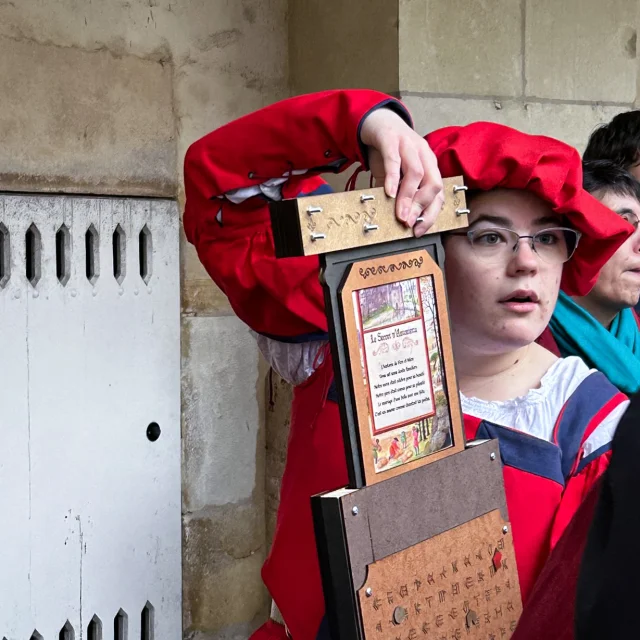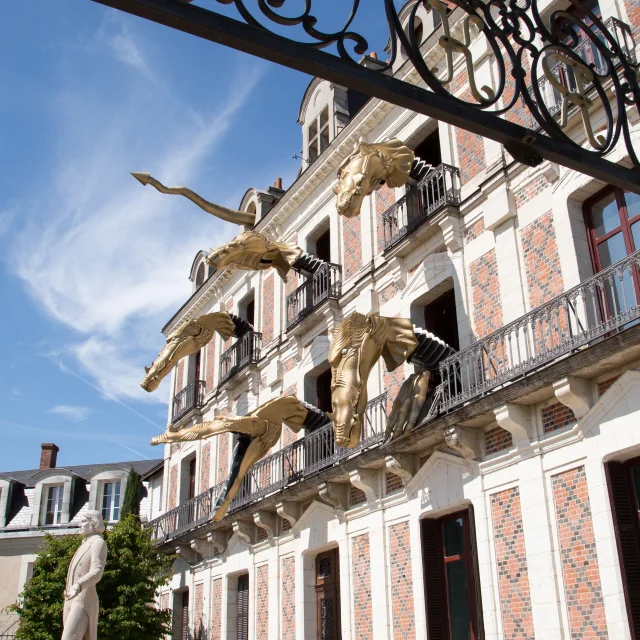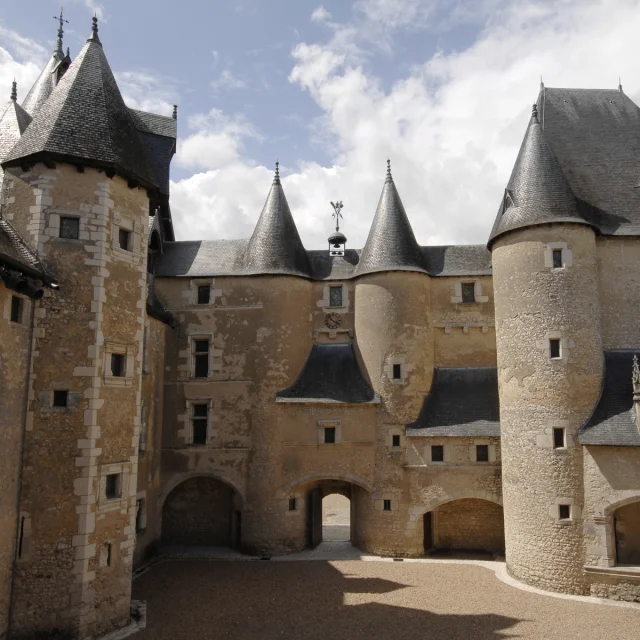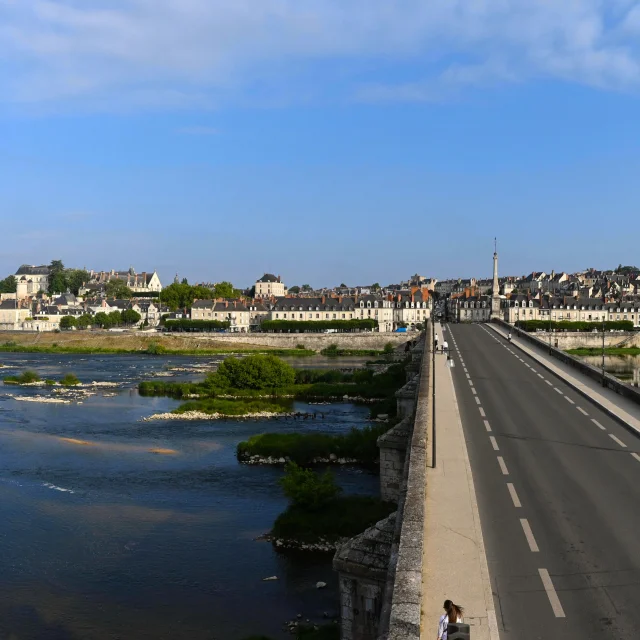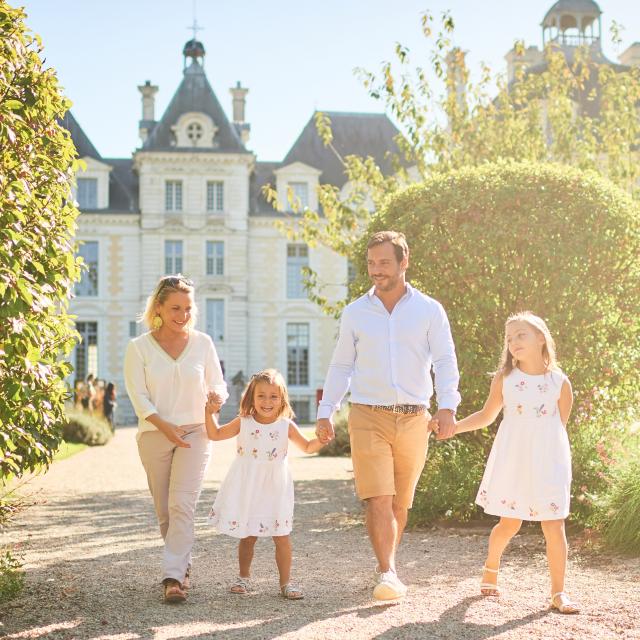The Cheverny estate has belonged to the same family for over six centuries: the Huraults, financiers and officers in the service of several French kings. The château is one of the largest in the Loire Valley, and is still inhabited by the Hurault descendants: the Marquis and Marquise de Vibraye.
All that remains of the first château, built in the 16th century, is a scant trace of the outbuildings. In the mid-16th century, the seigneury became the property of Diane de Poitiers, mistress of King Henri II, who sold it to the son of the previous owner and his wife.
Their son, Henri Hurault, and his wife Marguerite Gaillard de La Morinière, built the château between 1624 and 1630, entrusting the work to the architect Jacques Bougier (known as Boyer de Blois), who also worked on the new layout of the château de Blois. He used “pierre de Bourré (Loir-et-Cher)”, a stone native to this village in the Cher Valley. It has the particularity of whitening and hardening with age, which explains the whiteness of the château’s facades.
Their daughter, Élisabeth, Marquise de Montglas, completed the interior decoration around 1650, with the help of Blois painter Jean Mosnier. Over the next 150 years, Château de Cheverny changed owners several times. Finally, in 1825, Anne-Victor Hurault, Marquis de Vibraye, purchased the property from his ancestors.
Château de Cheverny has been open to the public since 1922, the brainchild of Philippe de Vibraye, great-uncle of the current owner, Marquis Charles-Antoine de Vibraye. But to do so, he had to obtain his mother’s permission. She agreed on one condition: that Cheverny would remain closed on Tuesdays, as she was entertaining friends there! Since the last generation, the monument has been the only one open 365 days a year, welcoming some 350,000 visitors every year.
Most beautifully furnished
The château, which has always been inhabited, features remarkably well-preserved furniture and interior fittings. The apartments on the second floor bear witness to the French art of living: the birth room, the red boudoir, the children’s room, the bride and groom’s room, the dining room and the petit salon.
Cheverny also boasts many other treasures, such as the 17th-century Gobelins tapestry in the Salle d’Armes, the Louis XIV Boulle chest of drawers and the Louis XV regulator (a precision clock used to regulate all the other clocks in the château) in the Salon des Tapisseries. And let’s not forget the four-poster bed decorated with Persian embroidery from the 16th century, used by Henri IV during his stay in the former château.
